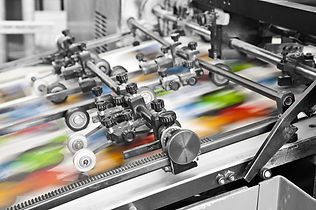
Green Printing
As far as we can see, there will never be a paperless municipal office. There will always be a need for printed building permits, marriage licenses and tax bills.
But the printing process can be hazardous: producing film, making the printing plates, and cleaning the presses require solvents, driers and other solutions known to cause human health problems, including certain types of cancer, kidney and liver damage and reproductive problems.

"Green printing" refers to new trends in printing and print design which reduce waste, reduce toxins, save trees and use recycled materials. The basic considerations are:
-
What kind of paper can be used for this print job? Every paper manufacturer now offers at least one line of paper with some recycled content.
-
Can the job be designed to use less paper, either by reducing type size, graphic content or printing on both sides of the sheet?
-
Can the job be printed using non-toxic soy-based inks, rather than traditional petroleum-based inks and solvents?
-
How many copies of this print job are really needed?
Resources
The Sustainable Green Printing Partnership is a non-profit organization, which establishes the sustainability benchmark for printing facilities. Built on three pillars, economic, societal and environmental, SGP's certification program encourages printers to reduce their environmental impact and increase social awareness of their best practices in order to provide print buyers a more sustainable supply chain.
References
[1] Kiurski, J. S., et al. (2016). Occupational hazards in printing industry. International Journal of Environmental Science and Technology, 13(3), 955-972.
[2] Anderson, S. E., & Meade, B. J. (2014). Potential Health Effects Associated with Dermal Exposure to Occupational Chemicals. Environmental Health Insights, 8s1, 51-62.
[3] Vachon, S., & Klassen, R. D. (2006). Green project partnership in the supply chain: The case of the package printing industry. Journal of Cleaner Production, 14(6-7), 661-671.
[4] Roberts, J. C. (1991). The Chemistry of Paper. New York, NY: Springer Science Business Media B.V., 1-8.
[5] Erhan, S. Z., & Bagby, M. O. (1995). Vegetable-oil-based printing ink formulation and degradation. Industrial Crops and Products, 3(4), 237-246.


